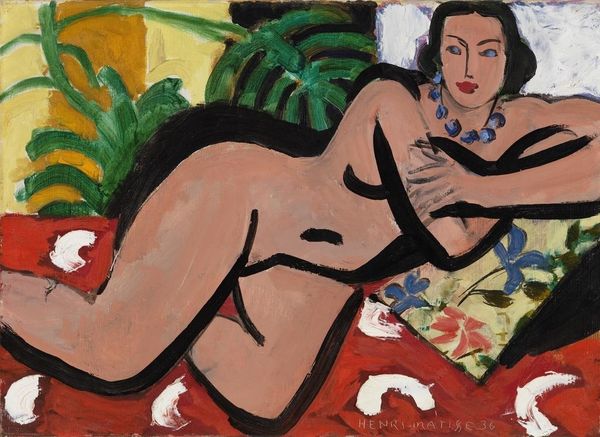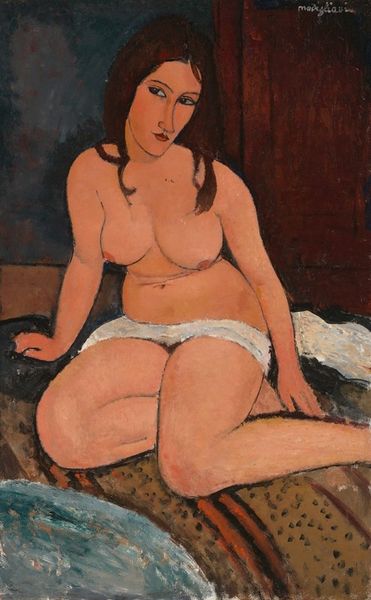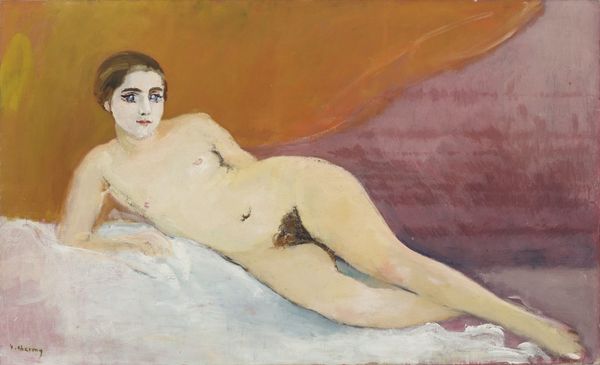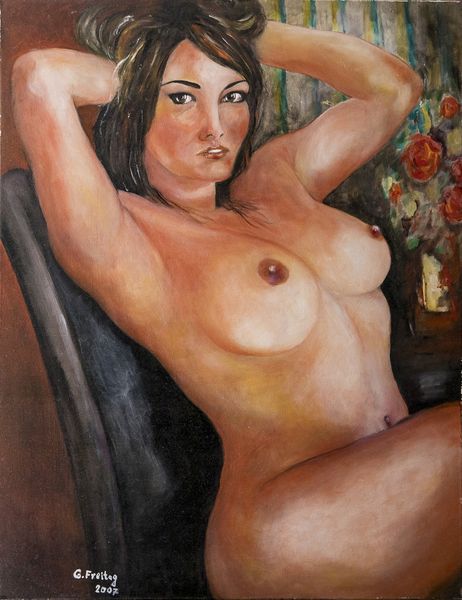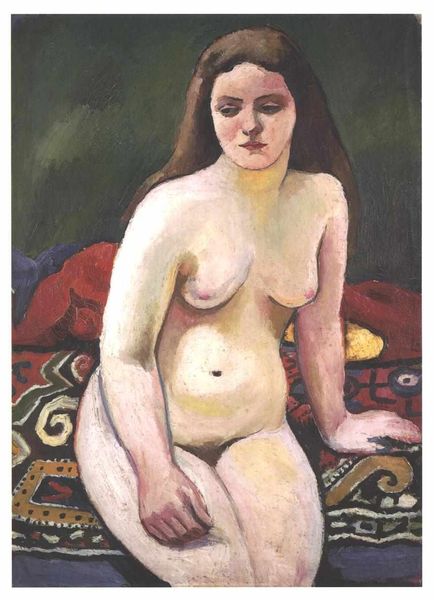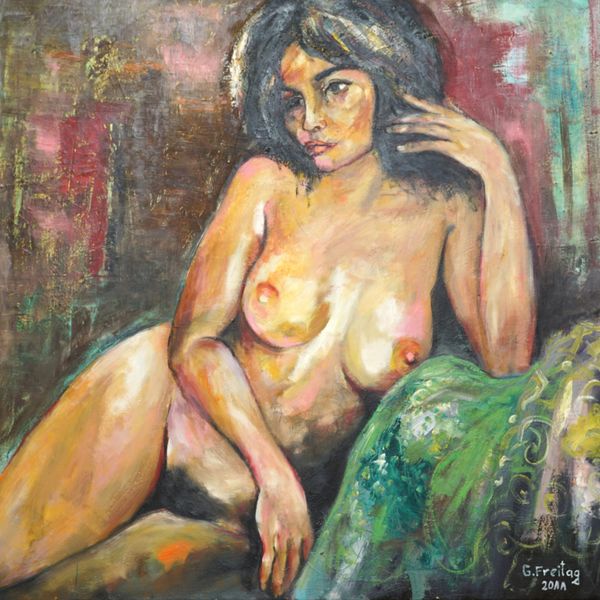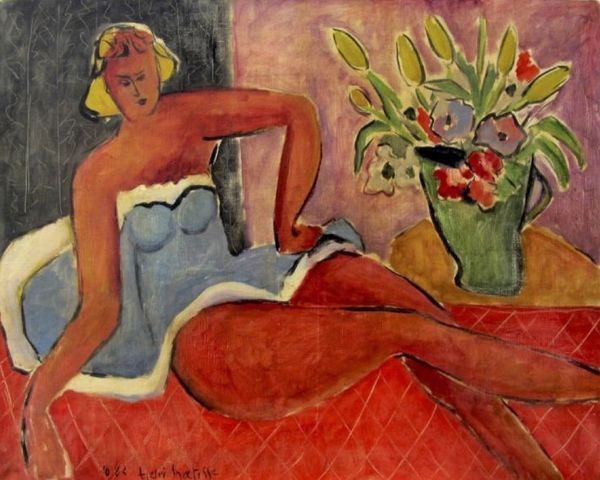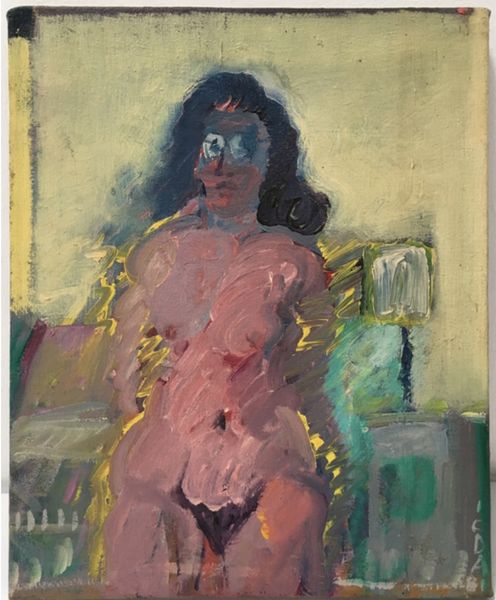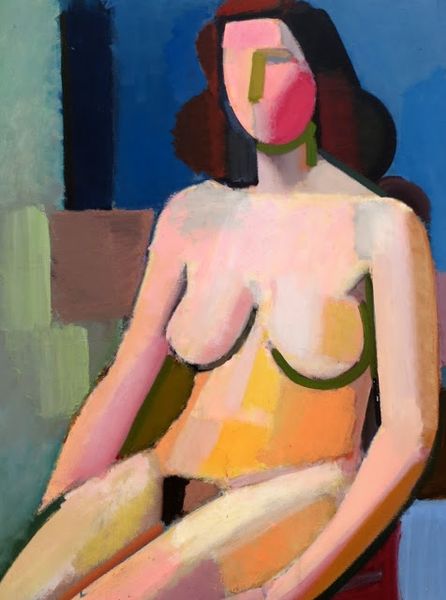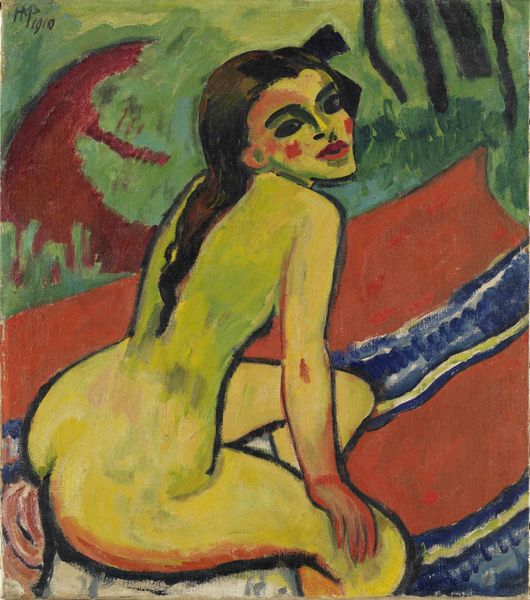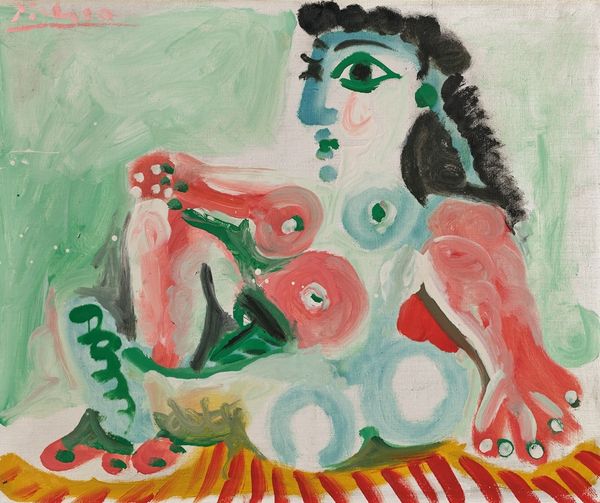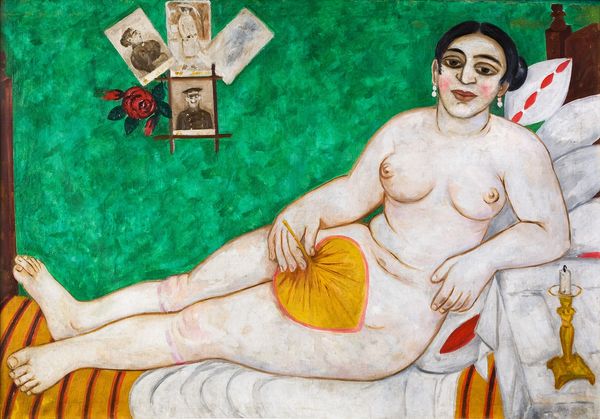
Dimensions: 105 x 125 cm
Copyright: Mariam Aslamazian,Fair Use
Curator: Look at this. Fertility, by Mariam Aslamazian. It’s an oil on canvas from 1966. Editor: Bold! My first thought is… powerfully earthy. The colors are saturated, and there's a confident sensuality to the figure. The way she's holding that bunch of bananas… it’s all just ripe with symbolism. Curator: Exactly! Aslamazian, as a Soviet Armenian artist, often walked a tightrope. On one hand, Socialist Realism was the prevailing style. On the other, she, along with her sister Yeranuhi, managed to maintain distinct artistic identities while celebrating Armenian culture and… women. This work challenges the common female depiction through form and contextualisation. Editor: It feels like a reclamation, doesn't it? A reclaiming of the female form outside of the male gaze. It subverts expectation, but also carries an open and vulnerable disposition in the subject’s expression. What's the background all about? Curator: I'm glad you asked. The patterned textile, traditional Armenian perhaps, situates the nude in a cultural context, it moves beyond a purely academic exercise and brings with it conversations of female roles within community. The bananas are the perfect addition to that conversation, because it alludes to the cycle of life but I wonder if you can call back on that reclaiming of female expression. Editor: Oh, it certainly amplifies that reading for me. The abundance, the promise... She owns that gaze, you know? Her power isn't performative, but genuine. It stands in quiet defiance. Curator: And isn’t it brilliant how Aslamazian accomplishes this with such expressive, almost raw brushstrokes? There's nothing dainty or fragile here. Editor: Not at all. It’s visceral and confident. The redness is intense; it does not take no for an answer! I really see a narrative around strength that is feminine and distinctly her own. So, in thinking about female art historical canon, I can draw strong lines between Aslamazian and her artistic choices. It leaves you wanting more. Curator: It's the artist, really; Aslamazian leaves you wanting more, a more complex idea about her artistic mission but mostly, a bigger art world discussion on powerful Armenian women. It challenges established orders. Editor: Absolutely, she's an unforgettable voice!
Comments
No comments
Be the first to comment and join the conversation on the ultimate creative platform.
